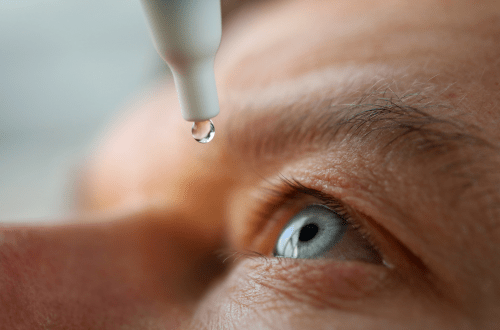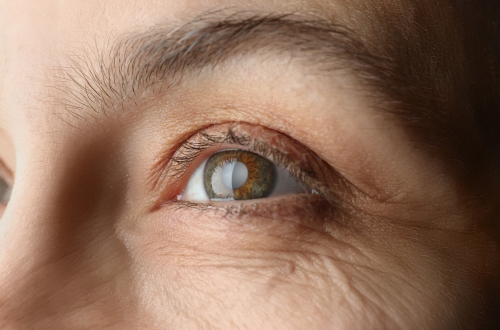Nanotechnology in Eye Care: Transforming Ocular Drug Delivery
Where the sensory organs of the human body are concerned, the eye is undoubtedly the most significant, considering 80% of all the sensory input we experience on a daily basis are collected via the eye. Given its importance in everyday functions, there are a number of physiological mechanisms that occur to protect eyes from harm. However, they remain vulnerable to injury or trauma that could interfere with their ability to perceive light and communicate with the brain. As of 2023, the World Health Organization (WHO) reported that more than 2.2 billion people worldwide have near or distant vision impairment. In addition to the devastating negative impact of vision impairment and blindness on patient quality of life, the global financial burden is estimated to have a cost of productivity of over US$400 billion each year. In the United States, ocular diseases such as cataracts, glaucoma, age-related macular degeneration (AMD), diabetic retinopathy, and more are associated with an economic burden of nearly US$140 billion each year.
Several traditional treatment approaches in eye care are widely used and recommended in clinical practice due to their therapeutic efficacy, but the physical anatomy of the eye presents some inherent barriers for ophthalmologists, pharmaceutical sponsors, and ophthalmology CROs (contract research organizations) with the selection of optimal drug delivery systems. However, several technological advancements, including those based on nanotechnology, have been driving dynamic progress in the field of ocular drug delivery. Read on as we discuss nanotechnology in the realm of eye care in more depth, the challenges it is helping address, as well as its various potential applications in medical ophthalmology.
Introduction to Nanotechnology
Nanotechnology refers to the scientific study of structures or functional materials at the nanoscale, manufactured using either or both physical and chemical methods. Nanobiotechnology is a more recent term that represents the intersection of nanotechnology and molecular biology, particularly useful in the healthcare and biotechnology sectors. This field has become a hot spot of research over the past few decades due to the unique chemical, electrical, optical, biological, and magnetic properties of nanomaterials. In combination with biotechnology innovation, nanotechnology now has a wide variety of applications across medical imaging, diagnostic kits, biological sensors, dentistry, sterilization of medical device surfaces, and many more. More specifically, nanotechnology typically encompasses the use of the following nanomaterials, which have numerous applications in healthcare and medical research:
- Nanoparticles: Used in antimicrobials, antifungals, as well as sensors, and diagnostic imaging.
- Carbon nanotubes: Used for protein delivery into cells, as vectors for gene delivery, and for treating bone diseases and breast cancer.
- Dendrimers: Used for gene delivery, as an antibacterial agent, as cancer therapy, and in treating ocular diseases.
- Nanofilms: Used as sensors in electrochemical devices, for controlled drug release, and in nanopatches for wound closure following surgery.
- Quantum dots: Used in diagnostics, real-time bioimaging, RNA delivery, and drug delivery.
- Nano-diamonds: Used for targeted drug delivery for the treatment of bone diseases, in imaging and cancer detection, and for treating brain and breast cancers.
- Liposomes: Used for drug delivery, protecting drugs from degradation, as well as for encapsulating antitumour drugs in cancer therapy.
Challenges with Current Ocular Drug Delivery Systems
Although several types of ocular drug delivery systems are widely used in clinical ophthalmology to treat eye diseases, there are challenges that make this task more complex due to the physiological barriers of eye structures and the vulnerable nature of this drug administration route. Below, we’ve outlined three major classes of ocular drug delivery systems and the fundamental limitations facing each, restricting their efficacies in eye care.
1. Systemic Administration
This route encompasses drugs administered orally and intravenously, which must first get past the blood-retinal barrier (BRB) and blood-aqueous barrier (BAB). Although these barriers have a crucial protective function in the eye, they also make optimal drug penetration more challenging, resulting in patients having to take a larger loading dose and potentially experiencing serious toxicity risks.
2. Topical Administration
Ophthalmic drugs with this route of administration can vary from liquid eye drop products to more solid creams and are highly preferable due to their user-friendliness. However, drug delivery is limited by local barriers, including lacrimation (i.e., producing and secreting tears), the corneal epithelium barrier, and tear film enzymes of proteins. As a result, topical ophthalmic drugs must absorb into the eye quickly and in sufficient concentrations before being washed away by tears.
3. Injections and Periocular Implants
Intravitreal injections are a direct drug delivery method that can ensure greater drug concentrations are absorbed into the eye. However, these are invasive and can result in complications such as bleeding, trauma to the ocular lens, or even retinal detachment. Subconjunctival injections and periocular implants provide an alternative, but these routes must avoid being eliminated by blood and lymphatic vessels in surrounding tissues.
How Nanotechnology Overcomes Limitations of Current Drug Delivery Systems
Despite the many routes of administration available for delivering ophthalmic drugs into the eye, there are several complex barriers and safety risks associated with each. Nanotechnology provides an alternative to these traditional methods and has demonstrated the capacity for efficient drug delivery by overcoming the complex barriers and elimination mechanisms in the eye. Thanks to their small size and highly variable surface properties, nanoparticles can effectively cross common ocular barriers and deliver drugs to the targeted sites, all without inducing toxic effects. Another advantage of nanoparticles is their biodegradability, which eliminates the need for surgical removal once the drug has been delivered [source].
Nanotechnology in Ophthalmology: Nanomaterials for Diagnostic Advancements
Several nanomaterials—including nanoparticles, nanoliposomes, nanocapsules, and more—have shown substantial promise in terms of providing superior results compared to traditional diagnostic methods for ocular diseases. For example, fundus fluorescein angiography (FFA) is a common diagnostic device used for visually capturing choroid and retinal blood flow by injecting fluorescein sodium into patients. However, the clinical use of fluorescein sodium has been linked to side effects such as anaphylaxis and vomiting, which constrains accurate disease detection. Instead, nanosized contrast agents were introduced and have shown potential in FFA for detecting AMD, as well as limited uptake into ophthalmic tissue to improve cellular toxicity risks.
Nanodiscs and gold nanorods are other nanomaterials being studied extensively as contrast agents to enhance eye care with optical coherence tomography (OCT), a critically important tool in ophthalmology for early ocular disease detection. Using these biomaterials in OCT has led to improved visualization of eye structures. Lastly, gold nanoparticles have served as an innovative component of developing home screening methods for diabetic retinopathy. In this approach, urine-based colorimetric test papers are provided to patients, and using a smartphone camera, color changes can be captured to enable the detection of biomarkers associated with diabetic retinopathy from a patient’s home.
Nanotechnology and Improved Ocular Drug Delivery Systems in Eye Care
Several applications of nanotechnology are currently being explored and even approved for use in delivering ophthalmic drugs into the eye more effectively. Each of these systems offers unique advantages in overcoming ocular barriers, promoting greater permeability into the eye, prolonging the time of drug presence at the target site, reducing the dosing frequency, improving patient compliance, reducing drug biodegradation, and more.
We’ve only covered a fraction of the recent advances and potential being demonstrated by various nanomaterials in eye care and drug delivery systems below. Readers interested in learning about nanotechnology advances in greater detail are encouraged to visit these publications by Li et al. (2023) and Afarid et al. (2022).
- Nanomicelles can encapsulate, solubilize, and deliver both hydrophilic and hydrophobic drugs, allowing for safe ocular drug delivery with a sustained release effect.
- Nanoparticles minimize irritation to the eye due to their small size when delivering ophthalmic drugs, also enabling sustained release without repeat dosing.
- Nanoemulsions and microemulsions are potential drug delivery vehicles, with advantages like prolonged retention time within the anterior cornea, sustained drug release, easy sterilization, and greater bioavailability with improved penetration capacity.
- Nanofibers provide long-term controlled drug release while minimizing drug distribution in other parts of the body, making them ideal for chronic eye diseases that need frequent administration.
- Dendrimers are nano-sized hyperbranched materials that have high capacities for encapsulated drugs. These are widely used in delivering hydrophilic and lipophilic drugs, nucleic acids (gene, miRNA/siRNA), and macromolecules.
- Liposomes can also encapsulate hydrophilic or lipophilic drugs and are widely used due to their high retention time on the ocular surface, which helps deliver drugs with otherwise poor absorption.
Overall, nanotechnology-based drug delivery systems have demonstrated significant promise in both anterior eye diseases (e.g., cataracts, conjunctivitis, keratitis, dry eye, and corneal injuries) as an alternative to eye drop therapy and posterior eye diseases (e.g., retinoblastoma, glaucoma, and macular degeneration), eliminating the need for invasive drug delivery via injections.
Conclusion
In conclusion, the application of nanotechnology in ophthalmology is providing several opportunities for revolutionizing eye care and early ocular disease intervention by overcoming the limitations of traditional ocular drug delivery systems. A variety of nanomaterials, such as nanoparticles, nanoemulsions, and liposomes, are currently showing significant potential in improving the diagnosis and treatment of ophthalmic conditions. Nanotechnology is paving the way for enhanced ocular drug delivery systems that are helping improve patient clinical outcomes in both anterior and posterior eye diseases. Although some of these advancements are still under development, research in this area will continue to seek safer, more effective alternatives for treatments and eye care.
About TFS HealthScience Ophthalmology CRO
As one of the top 10 ophthalmology CROs, TFS HealthScience (TFS) is a global, full-service contract research organization (CRO) with nearly 30 years of experience running clinical trials of all Phases across multiple therapeutic areas, including Ophthalmology. Experience the difference with TFS’s Ophthalmology CRO expertise for your next ophthalmology clinical trial! Our seasoned teams and innovative technology ensure efficient delivery, no matter the complexity. Trust TFS CRO to take your study to the next level with our dedicated expertise in ophthalmology.
With a global mindset and local understanding, we provide a comprehensive suite of services, including study protocol design, medical monitoring, and project delivery. Connect with a TFS team member to learn more about our CRO solutions for your next Ophthalmology clinical trial.
To learn more about how technology is shifting the landscape of eye care in ophthalmology, visit our Intellect Hub for information on the recent advancements in optometry, how artificial intelligence is shaping the field, and the key ocular drug developments for 2024!
Connect with Us
Contact us today to discover how TFS can be your strategic CRO partner in clinical development.



